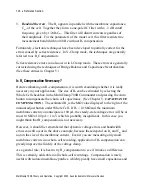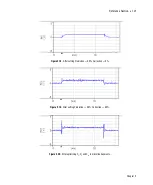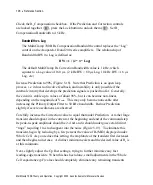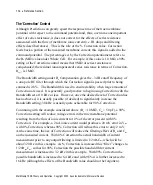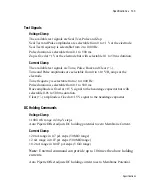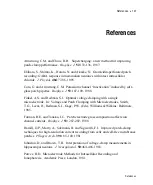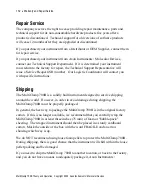
138
•
Reference Section
Status
•
STATUS light on the front panel of the MultiClamp 700B indicates traffic on
the USB cable.
•
See also Chapter 6,
TROUBLESHOOTING
.
The STATUS light illuminates whenever data is being transmitted on the USB
cable that connects the MultiClamp 700B to the host computer. Under quiescent
conditions the STATUS light flashes at about 2 Hz, indicating that the MultiClamp
700B Commander is interrogating the MultiClamp 700B in order to update its
meter displays.
The STATUS light is useful for troubleshooting. If it does not flash continuously, a
communication problem is indicated. (See
TROUBLESHOOTING
.)
Zap
•
Zap applies a large, brief voltage pulse to the electrode when in V-Clamp mode,
to facilitate breaking into a cell for whole-cell recording.
•
Zap is triggered by pressing the
button in the V-Clamp pane.
The conventional method for rupturing a membrane patch to go to whole-cell
recording is to apply a pulse of suction. Sometimes this method damages the cell.
Zap provides an alternative method. It applies a large (1 V) voltage pulse that
ruptures the patch, presumably by causing dielectric breakdown of the membrane.
The Zap duration can be varied; it is best to use the minimum duration that is likely
to achieve the desired result, because too long a Zap could cause the seal resistance
to deteriorate. A duration of 0.5 or 1 ms is suggested for initial attempts.
Apply a repetitive test pulse (
e.g.
Seal Test) and press the Zap button while
carefully monitoring Membrane Current. Sometimes it helps to apply steady
suction while Zapping. Successful break-through is signaled by an increase in the
current noise and by large whole-cell capacitance transients.
MultiClamp 700B Theory and Operation, Copyright 2005 Axon Instruments / Molecular Devices

